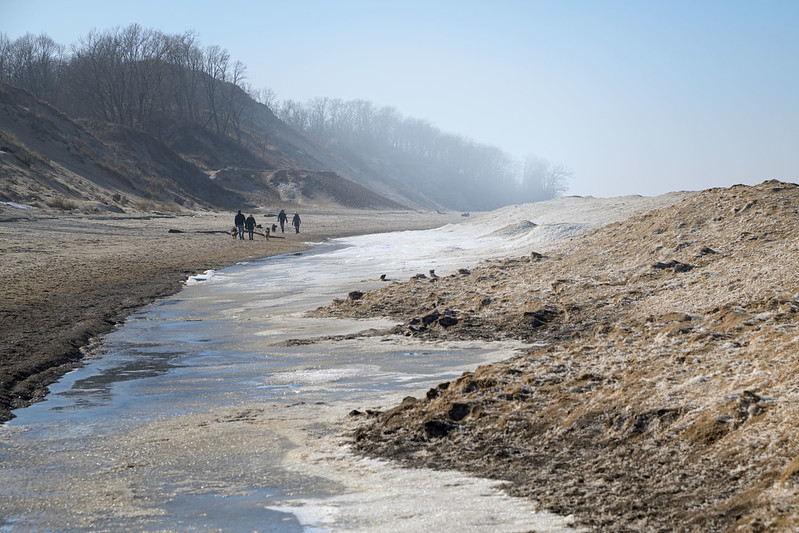
A bit of a breeze kicked up Lake Michigan this weekend, sending waves to pound the ice shelf. Every few seconds, loud, muffled thumps could be heard, followed by the splash of water onto the ice, this is how the ice mounds of Lake Michigan are formed, and how they degrade.
In very cold temperatures, this pounding and splashing sprays water and deposits ice chunks onto the ice where it freezes little by little until high mounds are built. At times of low winds, small pieces of ice are pushed against the ice mounds where they freeze in place creating a flat surface of round ice formations. Then the process starts again when the waves return, creating mounds further and further out into the lake.
As the weather warms, these waves create a demolition process, where the water and ice erode the mounds. It's evident in the past several days, that this process is breaking things down on the beaches of the Indiana Dunes National Park.

As ice forms on moving bodies of water, wind, current, and waves push the small pieces around at will. They bump into each other very frequently, and as they do, their edges raise slightly from the impact, and they freeze. This constant bumping and moving creates ice in disc form, and it's called pancake ice - it looks a lot like a pancake.
These formations can become very large in open spaces, but here along the beach, they tend to form around two to three feet in diameter. The pancakes also freeze together when the temperatures drop, and break apart when the temperatures rise. Here they're beginning to break apart, and as they do, the same process repeats, and the pancakes can increase in size and become more rounded.
When the waves finally break through the ice mounds - or erode the underside and slip under - the ice at the shore begins to break up and move around.
I'd love to have the time to create a time-lapse video of the ice forming and breaking apart over several days or weeks. Right now, the only safe way to do that would be to set up inside a home on the shore. Maybe one day.














































